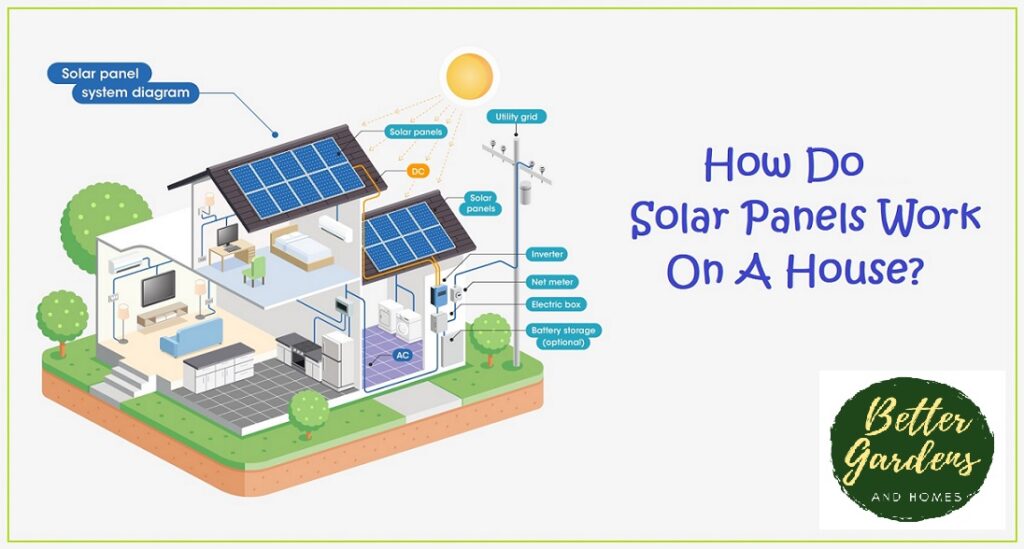This article is about solar panels, types, benefits, and how they work on a house or your home. You will also get the answers to the frequently asked questions.
Table of Contents
About Solar Panels
As the world is progressing every day, studies show that the world’s energy needs for a year can be obtain in the sun generating power for only a minute. Amazing, right?
It is in fact that within 24 hours the sun is able to generate more energy than the entire population would consume in 27 years.
Solar panel is a type of device which absorbs the sun’s rays and convert them into electricity or heat. This device consists of a collection of photovoltaic cells which generate electricity through the photovoltaic effect. #SolarPanels
And thus, we can say that the solar energy is both a reliable and lasting energy source. But, it is also extremely cost-effective and efficient. Here, the solar panel is the key component of any solar photovoltaic system. And, this system converts the sun’s energy into an electric current.
The solar cell was formed by coating sheets of selenium with a thin layer of gold. It may be noted that the photovoltaic effect was first discovered by Edmond Becquerel. And this discovery led to the invention of solar cells by Charles Fritts in 1893. The first production of solar panel was made by Russel Ohl when he patented the world’s first silicon cell in the year 1941.
Solar panels first found their mainstream use in space satellites. And today, solar panels and solar panel systems in general, have many users for power varieties of applications.
These panels now work with products ranging from calculators to solar powers to a house or buildings.
What Are The Different Types Of Solar Panel?
Before we get to the working of the solar panel, it is important that we first learn about the different types of solar panel. There are different types of solar photovoltaic installations that require different components.
#TypesOfSolarPanel
And because solar panel is the main component of any solar photovoltaic system, there are currently three main types of solar panel in the commercial products which are all based on semiconductors. However, we will discuss seven different types of solar panels here.
1. Monocrystalline Solar Cells
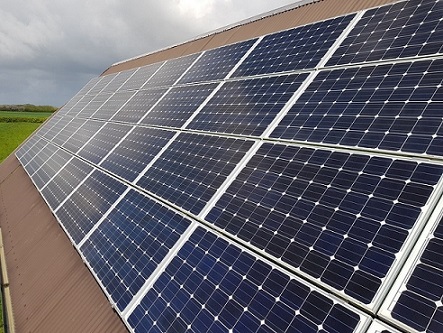
This solar cell is a pure one and easily recognizable from their uniform dark look and the round edges. The silicon’s high purity makes this type of solar have a high efficiency rate with higher lifetime value. Therefore, it is optimized for commercial purposes.
It is from thin wafers of silicon cut from artificially-grown crystals. And the cells are created from single crystals which are grown in isolation. Thus, making it the most expensive of them all in the market.
2. Polycrystalline Solar Cells

Polycrystalline solar cells have squares and their angles are with a blue speckle look. These type of cells are also cheaper. They are also like Monocrystalline cells because they are from thin wafers of silicon cut from artificially grown crystals.
However, instead of using single crystals, they are made up from multiple interlocking silicon crystals grown together making these cells sensitive to high temperatures. Therefore, they are normally cheaper and their efficiency is also lower.
3. Amorphous Solar Cells

These types of cells are the cheapest type of cells in the market. They are still relatively new and have very different production than the other solar cells.
Here, crystals are replaced with silicon which is deposited very thinly on a backing substrate. Since the layer of silicon is so thin the solar cells are more flexible and they are more efficient in low light levels as well. However, they also have a low efficiency rate which requires double the panel area to produce the output.
4. Thin-Film Solar Cells
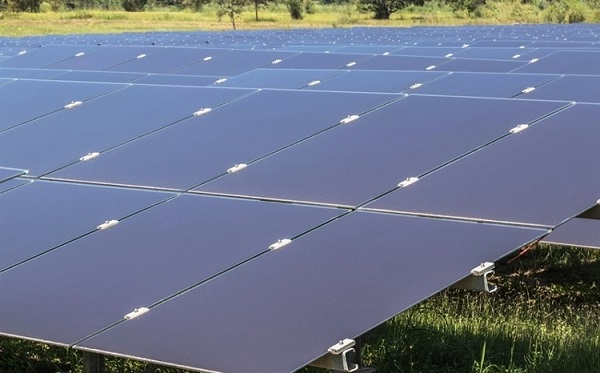
Placing one or more films of photovoltaic material onto a substate forms thin-film solar cells. Photovoltaic materials includes silicon, cadmium or copper.
These types of cells are inexpensive, not likely to get affected by high temperatures, and easy to produce. Thus, making them more flexible for alternative applications.
The only drawback is that they take up so much space that it makes them unsuitable for residential installations. And also they have the shortest warranties because their lifespan is also shorter than most other solar cells.
5. Hybrid Solar Cells
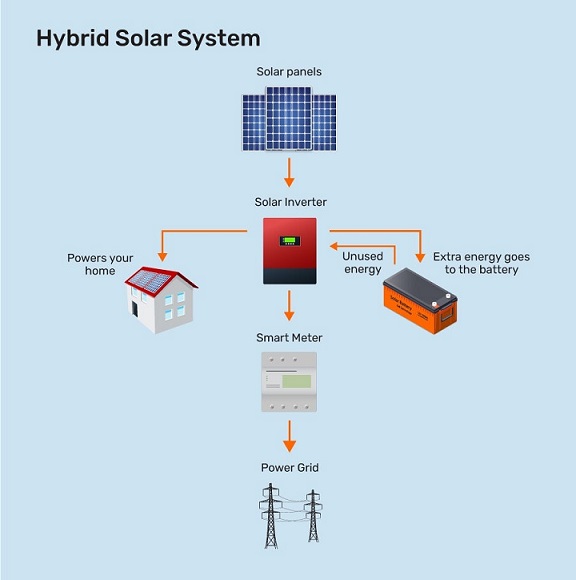
Although this type of solar cell is still in the research phase, it is a combination of both amorphous solar cells and Monocrystalline solar cells.
These cells are also known as HIT solar cells or Heterojunction with Intrinsic Thin Layer solar cells. They are better in a sunnier climate, where temperatures often exceed 250C, creating up to 10% more electricity.
6. Cadmium Telluride Solar Cell
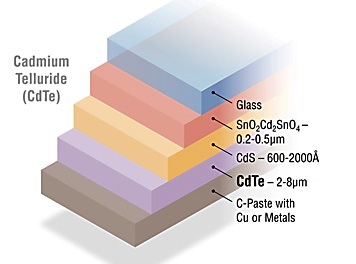
The use of cadmium telluride in photovoltaic technique enables this type of solar cell. It is also relatively low cost with a shorter payback time. Moreover, it also requires the least amount of water for its production.
Since the energy payback time is short, it will also keep the carbon footprint as low as possible. However, the most important disadvantage and drawback of using cadmium telluride is it’s highly toxic which may affect a person’s health if ingested or inhaled.
7. Concentrated PV Cell

The Concentrated PV cells generate the solar energy just like any of the other conventional photovoltaic systems do. These types of cells are efficient. They are manufactured with curved mirror surfaces, lenses and sometimes even the cooling systems are used to bundle the sun rays to increase their efficiency. Over the years, this solar cell has become one of the most efficient solar panels with a high performance.
However, this solar cell works only if they are perfectly angled in the face of the sun. And therefore, a solar tracker is place inside the solar panel to achieve the highest efficiency of the solar energy.
Monocrystalline solar cell is considered as the best because this solar cell is a pure one and easily recognisable from their uniform dark look and the round edges. The silicon’s high purity makes this type of solar to have a high efficiency rate with higher lifetime value and is often optimised for commercial purposes.
Working Of Solar Panels In Your Home
As we have discussed above, the installation of solar panels in the house can help you to reduce the expenditures as it is cost-effective and efficient.
#HowdoesSolarPanelsWork
So, the question here is how does it really work? The answer is, Solar panels work by collecting renewable energy in the form of sunlight and convert that light into electricity. It is then used to provide power for all electrical sources.
A home solar panel can produce up to 300 watts per hour on a normal summer day. This means it can produce about 3 kWh of energy in a day.
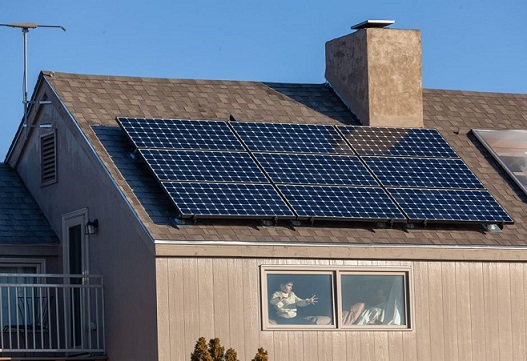
The Process
Solar panels may differ depending on the solar cells, layers of silicon, phosphorous and boron.
The production of energy to form electricity comes from each solar cell. These cells have a negative and positive layer to produce energy.
- Solar panels absorb photons from the sun’s rays and also knock the electrons free from atoms inside of photovoltaic cells to generate the flow of electricity.
- This is how the solar panels work on a house by converting those photons from the sunlight into direct current.
- The current then flows into your inverter.
- And later, the inverter transports the DC into the AC power.
- This AC is then send to your electric box to power your home and all other necessary applications.
What You Need To Do
Most homes and house have more than enough space in their roof or backyard to work with or install solar panels.
This ideally should be planted facing south to maximize the absorption of sunlight to produce solar electricity. Thus, supply all of its power needs for electricity use in a home especially at night.
The entire home solar power system should interconnect with adequate and appropriate cabling and wiring. This will help to channelize the energy into a usable form.
In a well-balanced grid connected configuration, a solar array panel generates power during the day which work to power the house at night.
The net metering programs also allow the solar generator owners to get paid if and when their system produces generous amount of power than what is needed in their home.
Convertin DC To AC
The solar array stores the energy and sent it to the battery bank through the charge controller. This energy is the Direct Current(DC). The inverter then converts the DC to the Alternating Current or AC. After which, the energy from solar panels work for other non-DC appliances in your house.
The AC current is commonly a source to many power loads such as
- Houses
- Commercial buildings
- Recreational vehicles and boats
- Remote cabins
- Telecommunication equipments
- Oil and gas flow monitoring
- RTU
- SCADA
Solar Panels For Off-grid living house
Installing solar panels in your home is a practical way to produce electricity for many purposes and applications. Especially, if you adopt the lifestyle of an off-grid living. This means, living in a secluded location that is not serviced by main electric utility grid and as such.
Homes and cabins in these areas benefit from solar power systems. This makes it less expensive and unnecessary to install electric poles and cabling points from the nearing main grid access point.
In most off-grid applications, some necessary components such as a battery bank, charge controller, and an inverter are also requirements to install a solar panel.
The solar power system is robust and also comes with a warranty of up to almost three decades.
Benefits Of Installing Solar Panels On A House
There are many benefits of installing solar panels to work in our house or at home. It is a renewable source of energy and in times where we are dealing with global climate crisis, it is important that we understand more about the benefits of this system to put it into practice. Below are some of the benefits:

Cheaper cost savings
The biggest advantage and benefit of installing solar panels in our house is that they are extremely cost-effective and offer lesser rates in comparison to industrial and commercial rates. Installing this system in your homes can help home owners to reduce electricity bills.
Save Investment
As the electricity prices keep on fluctuating from time to time, it is difficult to keep track the electricity expenditure. However, solar panel electricity can be calculated easily. You only have to pay for the initial investment. After which the powers generated from the solar panels are free.
This makes for a more secure investment because, with proper maintenance, power generates for at least up to three decades or more.
Reduce Carbon Footprints
The installation of solar panels harnesses sunlight to generate electricity which poses fewer pollution risks to the environment. It also reduces the emissions of greenhouse gases.
And unlike a generator, it does not produce harmful gases. Furthermore, it is also a good source of energy that helps with the initiatives of climate change.
Environmental friendly source of energy
As the world is adapting to more of eco-friendly options, solar panels makes for an ideal choice in their efforts to combat climate change.
The consumers range from homeowners to Industrial and commercial owners who are willing to make capital investments to contribute their share in the efforts of the preservation of the environment.
Low Maintenance cost of energy
Another important benefit of this system is that it requires very little and low maintenance cost. If properly maintained, they have a lifespan or warranty for up to three decades.
Use of solar power for multiple applications
The solar power system does not limit to generating electricity. It can also use to power other applications such as computers, heater, television, heat water and supply hot water or air in the building. It can also be used to run electric generators.
Need not require additional space for installation
Solar panels need not require additional space for installation to work in a house. Just your rooftop or backyard will suffice. Therefore, you don’t need to vacate or buy land just to install this power plant. Moreover, the panels offer protection to the roof of the building in which they are installed.
Bottom Line
The solar panel system also comes with a clean and renewable source of energy. This is really great because the world is going through adverse climate changes. And, it is important that we do whatever we can at our disposal to reduce the pressure on our atmosphere from the harmful emission of greenhouse gases.
Another important thing to note here is that, you only have to pay an initial amount for its installation costs. After which, the electricity that the system produces for the entire lifespan, is absolutely free of cost. However, finding the right solar quote is never easy. Therefore, you can also get an expert network to help you get the right solar panels to work for your house. They will guide you to get access to the top solar panel providers and installers that are right for you.
Frequently Asked Questions (FAQs)
How do solar panels work in my home?
Solar panels work in your home by absorbing photons from the sun’s rays and knock the electrons free from atoms inside of photovoltaic cells to generate the flow of electricity. This is how the solar panels work on your home by converting those photons from the sunlight into direct current. They flow into your inverter and later, the inverter transports the DC into the AC power. And, this AC is then sent to your electric box to power your home and all other necessary applications.
Where should I install solar panels in my home?
As most homes have more than enough space in their roof or backyard, solar panels should be installed in either one of them. And ideally it should be planted facing south to maximize the absorption of sunlight to produce solar electricity. After which, supplying all of its power needs for electricity use in a house especially at night.
Do I need to vacate or buy a land or property to install solar panel?
No, you don’t need to. Solar panels need not require additional space for installation and just your rooftop or backyard will suffice. Therefore, you don’t need to vacate or buy a land just to install this power plant.
Will it cost a lot if I install solar panel in my home?
No, it is not. In fact, you only have to pay an initial amount for its installation costs. After which, the electricity which the system produces for the entire lifespan, is absolutely free of cost. Moreover, it requires very less and low maintenance cost as well.

